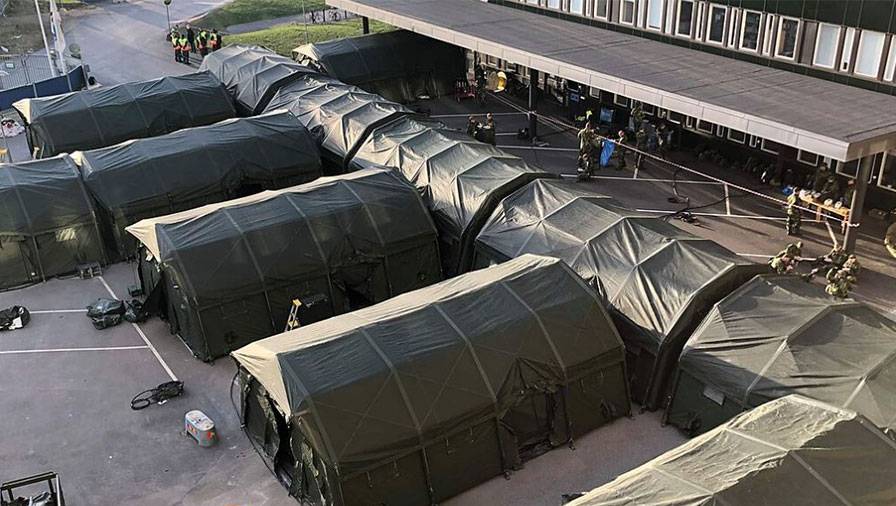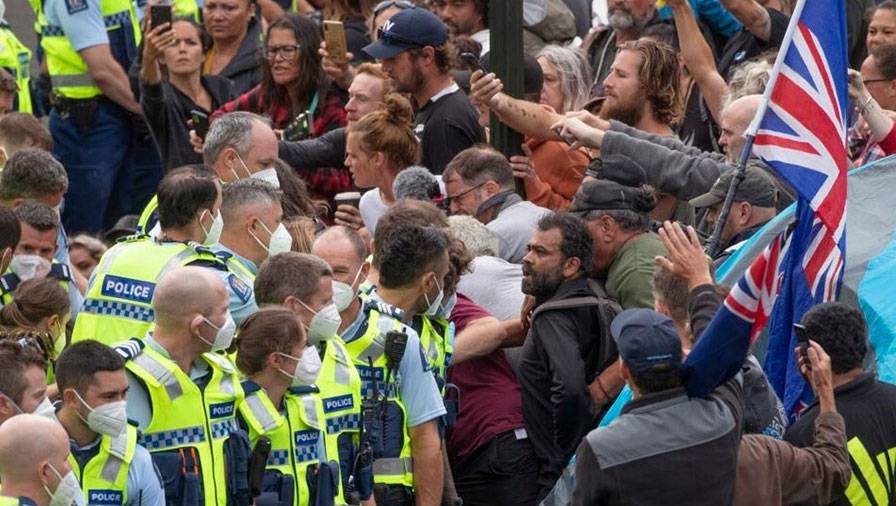A Musketeer’s Covid-19 tale
Physicist Shaun Hendy puts the case for the scientific response.
The Covid Response: A scientist’s account of New Zealand’s pandemic and what comes next, by Shaun Hendy.
Physicist Shaun Hendy puts the case for the scientific response.
The Covid Response: A scientist’s account of New Zealand’s pandemic and what comes next, by Shaun Hendy.
A correspondent to the editor of the New Zealand Herald succinctly summed up a widespread view of the Covid-19 pandemic:
“… the extended Auckland lockdown – lasting four months – could likely have been avoided if New Zealand had acted faster and paid a premium to secure vaccines earlier, as other countries.
“That delay cost us dearly. Businesses failed, mental health suffered, and the economic fallout will be with us for a generation. But the damage wasn’t just economic. The extended lockdowns and the hard MIQ regime kept families separated, prevented dying relatives from saying goodbye, and stranded thousands of New Zealanders overseas – many of them citizens desperate to return home.
“That is not a success story; it is a national trauma.”

Shaun Hendy.
A royal commission grappled with some of these issues, but such inquiries seldom produce readable documents. Thankfully, the first comprehensive insider’s account has arrived: The Covid Response, by Shaun Hendy. It’s highly readable, written in chronological order, and describes events from a scientific angle.
Hendy describes himself as one of the ‘Three Musketeers’ – scientists who explained the pandemic to the public through the media. The others were also academics – microbiologist Siouxsie Wiles (a colleague of Hendy’s at the University of Auckland), and Wellington-based epidemiologist Professor Michael Baker, of the University of Otago Medical School.
There were others, but these three emerged as the dominant go-to spokespeople outside of official circles. The media demands on them were extreme; Hendy says he did a dozen on one day and a thousand over the three years.
Hendy’s scientific qualifications are in physics, but he has always had an interest in scientists playing a bigger role in public debate. Scientists in the public service are constrained in making media appearances, while many academics are reluctant to share their views on anything.
Hendy has produced two books in the BWB Text series of pocket-sized paperbacks: Silencing Science (2016) and #No Fly (2019), the latter revealing his deep commitment to the climate change cause by forgoing air travel for a year. He is now chief scientist at Toha, a climate innovation company.
He was alert to the need for an informed public knowledge from the first reports of a pneumonia outbreak in Wuhan, China. It was early January 2020, and he was travelling in Germany.
On his return, he contacted Wiles, a microbiologist and already a well-established communicator. On January 29, the WHO reported 132 deaths from a coronavirus, similar to the Sars pandemic in 2003/04. It was a flu-like illness, typically involving a dry cough, fever, and fatigue.
Severe cases had breathing difficulties, leading to pneumonia, organ failure, blood clots, and even death. The main victims were elderly people with other conditions such as heart disease, diabetes, and hypertension.
The Sars outbreak, which also originated in China, killed 10% of those infected and was contained in neighbouring countries through draconian but effective public health measures known as ‘test, trace, and isolate’.
The difference with Covid-19 was that, unlike Sars, it was infectious before it showed symptoms. China initially acted with a lockdown of Wuhan’s 13 million population, but not before some 100,000 left and spread it as far as Italy within weeks, all of it from air travel.
Locally, the first positive case was an Iranian who arrived via Bali on February 28. Two other cases quickly followed, as a traveller from Italy passed on the virus to their partner, the first New Zealander to be affected.
In 2013, Hendy had formed a research centre, Te Pūnaha Matatini, that in 2020 had some 70 affiliated scientists and researchers. It had modelling capacity, essential in tracking pandemics, and eventually became part of the Government’s national response after a state of emergency had been declared on March 25.
The main weakness, as Hendy tells it, was not the lack of a pandemic plan but that contact-tracing data were held by 20 district health boards in a variety of forms, including spreadsheets.

Wuhan was China’s main centre for the study of viruses.
This provided the first headache for modellers, who realised that communicating limited data would be fraught with problems when passed on by the media. Hendy is at pains to describe the difficulties, confirmed when Te Pūnaha Matatini’s first public report resulted in wildly differing interpretations.
The worst was Stuff’s use of one scenario that Covid-19 could claim 80,000 lives if left unchecked. Other more informed media reached far less alarmist conclusions, while Hendy and his team insisted modelling forecasts were not predictions of what would happen.
The poor data dogged New Zealand modelling throughout the pandemic, with overseas examples having to fill some gaps. Hendy is dismissive of rivals, such as fellow Auckland academic Simon Thornley’s Plan B group, which Hendy says underestimated the threats.
Thornley later faced a virtual media blackout. Rodney Jones had a better run, with a call to ease restrictions later in the pandemic when the main issue was the level of vaccination penetration.
Singapore and Denmark were among the first to open their borders at 80%. But both were forced to retract, with Hendy observing the more-infectious Delta variant “had upped stakes considerably”.
Covid-19 came in various waves, with New Zealand’s elimination strategy achieving 100 Covid-free days in 2020. ‘Going hard’ was predicated on scenarios that brought an earlier end to the pandemic, and less economic pain in the long run.

A Covid-19 field hospital in Gothenburg, Sweden.
In 2020, “New Zealand enjoyed the fourth-most relaxed set of measures in the OECD on average, after Japan, Finland, and Estonia, despite deploying the toughest lockdown,” Hendy observes. “Our strategy saved both lives and the economy.”
In Sweden, with no lockdowns, the ‘herd immunity’ strategy failed, with a series of Covid-19 surges that continued through to February 2022 when vaccination levels eventually brought the pandemic under control. At best, the vaccines suppressed symptoms but were less reliable in preventing infection rates.
Hendy agrees the Government’s vaccine strategy was poorly managed, as were the blocks on private and business initiatives for self-testing and Covid cards that were part of the buildup of public resistance to lockdowns during Delta’s arrival from India in the second half of 2021.
Delta was so infectious, and its effects muted by the vaccines, that the Government finally abandoned its elimination strategy. The modelling debate became less contentious with the Omnicron variant from South Africa. At their peak, on March 7, 2022, infectious cases reached 50,000, long after the last lockdown.
The media and the public came to understand that modelling pandemics was different from weather forecasts on whether to take an umbrella. “Our job was more akin to trying to predict how many people would get caught in the rain than predicting whether it would rain,” Hendy explains.
He compares the pandemic modelling sceptics, like Jones, with those who challenge climate change scenarios, and he has a lot to say about those who use extreme examples to undermine scientific credibility.

The Covid-19 protest at Parliament required police intervention.
Sceptical voices were raised against the Government’s vaccine mandates, which became irrelevant after Omnicron. The protest movement culminated in the month-long occupation of Parliament in February 2022. By then, overseas sources had fuelled a disinformation campaign against vaccines as well as conspiracy theories that Covid-19 was an authoritarian hoax.
Some of the culprits are named and Hendy describes the work of Kate Hannah in confronting the anti-vaxxers. She was later to head the short-lived Disinformation Project, which created even more controversy from free speech advocates.
Hendy defends the calls by Te Pūnaha Matatini for lockdown extensions on the single ground that Māori and Pasifika populations, who were the most vulnerable to the virus, had low vaccination rates. It was a political belief based on a racial health system “that had failed them”.
Government policy has since abolished the racial element in public health priorities. Hendy will be judged on whether it was justified to sacrifice the livelihoods of the majority for a group who, for whatever reason, did not want to follow everyone else.
Modelling pandemics was different from weather forecasts on whether to take an umbrella.
The Covid-19 pandemic had seven million confirmed deaths, though the “true figure” could be 23 million, due to the reluctance of some countries to reveal the facts. New Zealand’s death rates, if compared on a per capita with the US and the UK, would have been 17,000 to 18,000.
In fact, there were 2662 directly attributed Covid-19 deaths in March 2023 (the total now is 2738 plus 1572 contributory). This compares with Australia’s 20,000 deaths, while Sweden had 24,000.
Hendy ends by throwing barbs at university authorities, who failed to protect their staff from public opprobrium when making comments in good faith. He also notes that some still believe, without evidence, that the Government and the scientific community have concealed large numbers of unrecorded deaths from lockdowns and the vaccine.
This book is a level-headed analysis, with 50 pages of sources and index, for those who welcome a record of events shorn of extraneous material that some may have preferred, such as the social and economic fallout. That space has yet to be filled.
The Covid Response: A scientist’s account of New Zealand’s pandemic and what comes next, by Shaun Hendy (Bridget Williams Books).
Nevil Gibson is a former editor-at-large for NBR. He has contributed film and book reviews to various publications.
This is supplied content and not commissioned or paid for by NBR.
Sign up to get the latest stories and insights delivered to your inbox – free, every day.